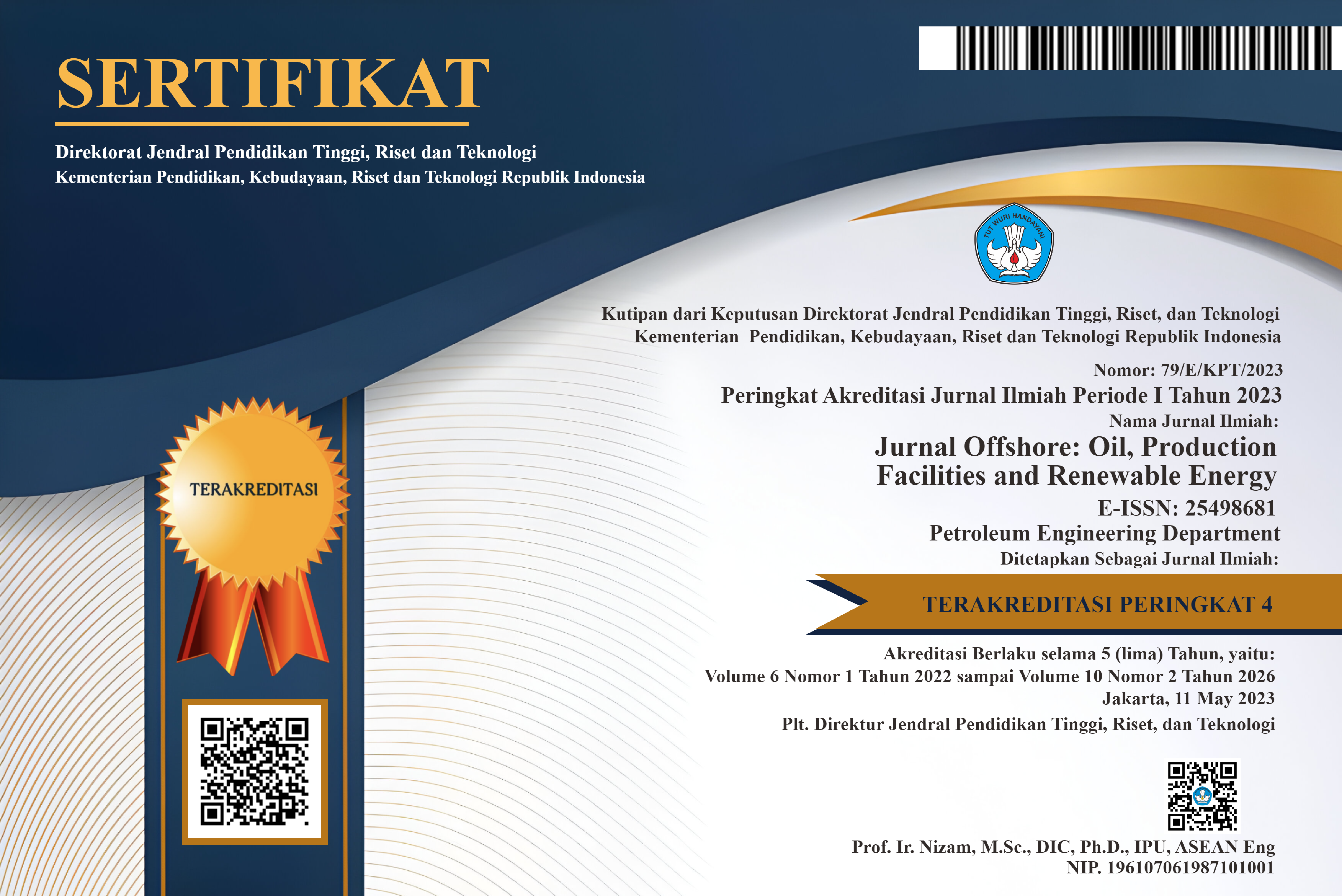Potensi Batuan Induk Hidrokarbon Serpih Warukin di Tampang Tumbang Anjir, Kabupaten Gunung Mas Propinsi Kalimantan Tengah
DOI:
https://doi.org/10.30588/jo.v5i2.988Keywords:
fasies, batuan induk, potensi, kualitas, dan kematanganAbstract
Identifikasi interval batuan yang mungkin berpotensi sebagai batuan induk merupakan langkah awal eksplorasi yang penting, oleh sebab itu perlu dilakukan penelitian tentang potensi batuan sedimen yang mengandung bahan organik dengan kadar tertentu, yang oleh panas dan waktu dapat menghasilkan hidrokarbon dalam bentuk minyak atau gas secara tepat. Penelitian ini bertujuan untuk mengidentifikasi fasies dan potensi batuan induk hidrokarbon Formasi Warukin di Tampang Tumbang Anjir, Cekungan Barito.
Analisis geokimia guna mengetahui potensi dan kualitas batuan induk dilakukan pada serpih penyusun Formasi Warukin. Hasil analisis potensi dan kualitas Batuan Induk menunjukkan kandungan TOC 17,97% termasuk “sangat baik”. Rock-Eval menunjukkan bahwa serpih berpotensi “baik” sebagai batuan induk hidrokarbon (S2 = 67,87 mg/g). Angka Tmax 405 menunjukkan tingkat pematangan hidrokarbon belum tercapai. Nilai HI yang relatif tinggi mencerminkan bahwa batuan ini jika mencapai kematangan akan cenderung menghasilkan minyak dan gas. Nilai HI antara 378 mgHC/g umumnya berasal dari kerogen tipe II yang secara dominan mengandung unsur organisme laut dan darat.
References
Sumartadipura. A.S., Margono. U., 1996. Geological Map of Tewah Quadrangle, Kalimantan, 1:250.000, Geological Research and Development Center.
Satyana. A., 1995, Paleogene Uncoformities in The Barito Basin, Southeast Kalimantan: A Concept for The Solution pf The “Barito Dilemma” and Key to The Search for Paleogene Structures. Proceeding Indonesia Petroleum Association, Twenty Fourth Annual Convention, October 1995.
Kusuma. I, Darin. T., 1989, The Hydrocarbon Potential of the Lower Tanjung Formation, Barito Basin, S.E. Kalimantan., Proceeding Indonesia Petroleum Association, Eighteenth Annual Con-vention, October 1989.
Bordenave, M. L. (ed.), 1993. Applied Petroleum Geochemistry. Editions Technip, France, 524pp.
Dalrymple, R. W., 1992, Tidal depositional System, in Walker, R.G., and NP James, Facies Model, Rrespons to Sea Level Change, Geol. Association, Canada.
Dalrymple, R.W., and Davis, R.A., 2012 Principles of Tidal Sedimentology, Springer Science+Business Media B.V
Peters, K.E., 1986. Guidelines for evaluating petroleum source rock using programmed pyrolysis. American Association of Petroleum Geologists, Bulletin, 70, p.318-329.
Tissot, B.P. dan Welte, D.H., 1984. Petroleum Formation and Occurrence, Edisi Kedua, Springer-Verlag, Berlin, 699 h.
Selley, R.C., 1985, Ancient Sedimentary Envi-ronments, Third Edition. Cornell University Press, New York
Waples, D.W., 1985. Organic Geochemistry for Exploration Geologist. International Human Resources Development Corp., Boston, 232 h.
Downloads
Published
How to Cite
Issue
Section
License
Authors retain copyright and grant the Jurnal Offshore right of first publication with the work simultaneously licensed under a Creative Commons Attribution 4.0 International License that allows others to share (copy and redistribute the material in any medium or format) and adapt (remix, transform, and build upon the material) the work for any purpose, even commercially with an acknowledgement of the work's authorship and initial publication in Jurnal Offshore. Authors are able to enter into separate, additional contractual arrangements for the non-exclusive distribution of the journal's published version of the work (e.g., post it to an institutional repository or publish it in a book), with an acknowledgement of its initial publication in Jurnal Offshore. Authors are permitted and encouraged to post their work online (e.g., in institutional repositories or on their website) prior to and during the submission process, as it can lead to productive exchanges, as well as earlier and greater citation of published work (See The Effect of Open Access).















